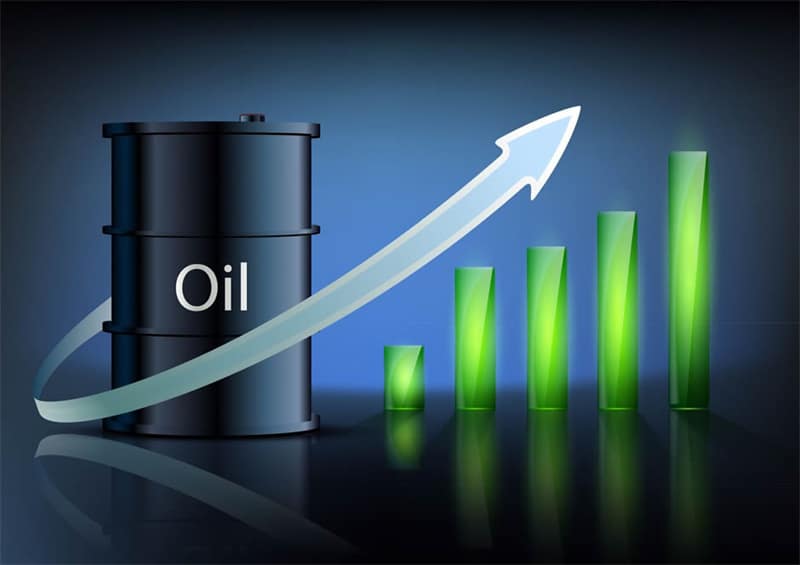
The oil and gas industry, a linchpin of modern economies, is traditionally segmented into three parts: upstream, midstream, and downstream.
While the upstream sector focuses on exploration and production, and the downstream focuses on refining and selling, it's the midstream sector that ensures the smooth transition between these two ends.
At the heart of midstream operations lies a crucial component: trading. This article delves deep into the metrics that underpin the success of midstream oil trading. Visit the official site and seize the chance to experience a remarkable trading platform like never before.
Understanding Midstream Oil Trading

In the simplest terms, midstream oil trading revolves around the transportation, storage, and wholesale marketing of crude oil or refined products. Midstream operators, often called traders, play the pivotal role of ensuring that there's a balance between supply (from upstream producers) and demand (from downstream consumers).
They optimize transportation routes, decide when and where to store oil, and manage the risks associated with fluctuating prices.
The Importance of Metrics in Midstream Trading
Metrics aren't just numbers; they are the compass by which traders navigate the turbulent waters of the oil market. Accurate metrics are crucial for several reasons:
- Decision-making: Whether deciding on transport routes, storage durations, or when to buy or sell, metrics provide the data on which these decisions are based.
- Profitability: Without accurate metrics, traders can't gauge the profitability of their operations. Metrics offer insights into costs, revenues, and margins.
- Real-time Response: The oil market is dynamic. Real-time metrics allow traders to respond immediately to changes, ensuring that opportunities aren't missed and losses are minimized.
Key Performance Indicators (KPIs) in Midstream Trading
Several KPIs are pivotal in midstream trading:
- Volume Metrics: These encompass the total volume traded, the volume currently in transit, and the volume in storage. Monitoring these metrics ensures that there's no overcapacity or underutilization.
- Financial Metrics: Vital for any business, financial KPIs in midstream trading include margin per barrel, revenue from storage, and revenue from transportation.
- Operational Metrics: These metrics monitor the efficiency and safety of operations. They include the uptime/downtime of transportation methods (like pipelines or tankers) and storage utilization rates. Additionally, tracking incidents or accidents during transportation can offer insights into areas requiring improvement.
- Risk Metrics: Given the inherent risks in trading, metrics like price volatility, counterparty risk, and geopolitical risks affecting transport routes are indispensable. They help traders prepare for and mitigate potential disruptions.
Technological Advancements and Metrics
The advent of technology has revolutionized metric accuracy and real-time data collection. Some noteworthy advancements include:
- IoT and Sensors: Internet of Things (IoT) devices and sensors, when attached to storage tanks or transportation vehicles, can provide real-time data on volumes, temperatures, and more.
- Digital Twins and Simulations: Creating a virtual replica of a physical system allows traders to predict outcomes based on different scenarios. This is invaluable for decision-making.
- Blockchain: While traditionally associated with cryptocurrencies, blockchain's transparent and immutable nature can ensure data accuracy, preventing tampering and providing trustworthiness.
Challenges in Measuring Performance
Despite advancements, measuring performance in midstream trading isn't without challenges:
- Data Accuracy: Erroneous data can lead to misguided decisions. Ensuring data integrity is paramount.
- Geopolitical Factors: From trade embargoes to regional conflicts, geopolitical issues can disrupt midstream operations. While metrics can gauge current situations, predicting such disruptions remains challenging.
- Data Overload: The sheer volume of data can be overwhelming. Efficiently managing and interpreting this data is crucial.
Case Study: Successful Use of Midstream Metrics
Consider the example of XYZ Corp., a midsize midstream trader. A few years ago, they faced declining profits. By overhauling their metrics system, incorporating real-time IoT data, and employing predictive analytics, they not only arrested the decline but boosted their profitability by 15% in a year.
This case underscores the transformative potential of effective metrics.
The Future of Midstream Metrics

Looking forward, the role of metrics in midstream trading will only grow. Predictive analytics powered by AI can offer foresights rather than insights, enabling proactive rather than reactive decision-making.
Moreover, as the world grapples with climate change, incorporating environmental, social, and governance (ESG) metrics will become indispensable. Traders will need to balance profitability with sustainability, making the role of metrics even more crucial.
Conclusion
Metrics are fundamental to midstream oil trading, evolving with the industry to mirror shifting priorities and challenges. Leveraging resources can provide invaluable insights, ensuring traders remain adept in the intricate realm of oil commerce.










